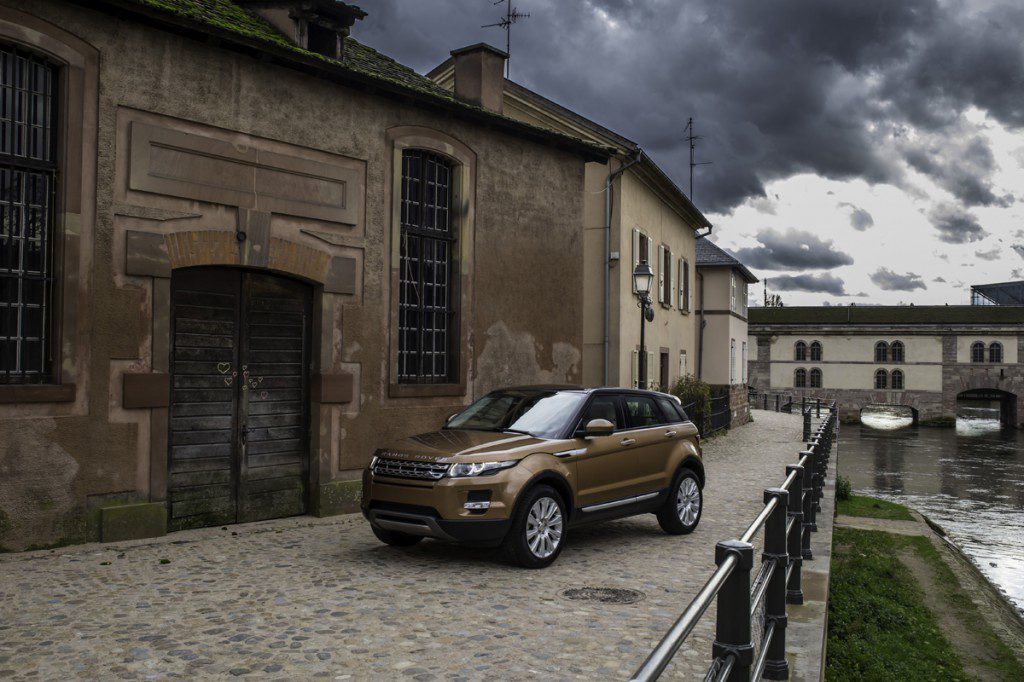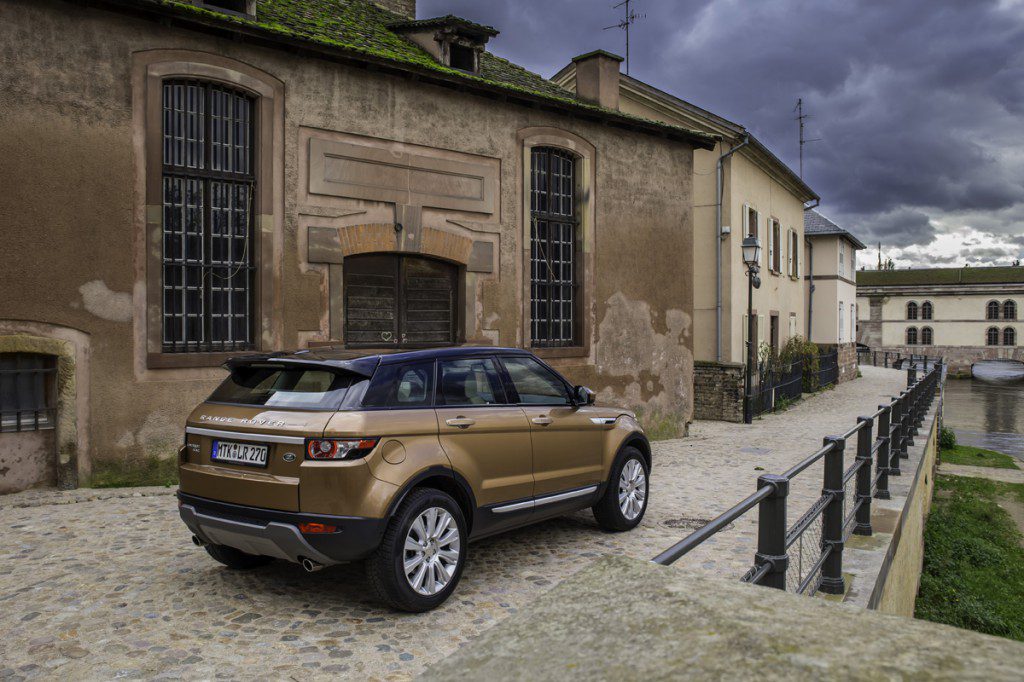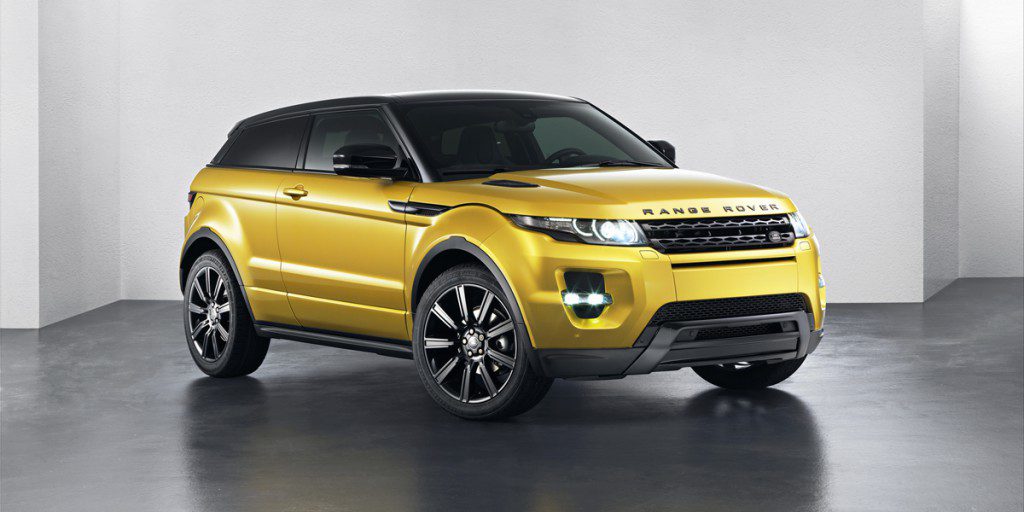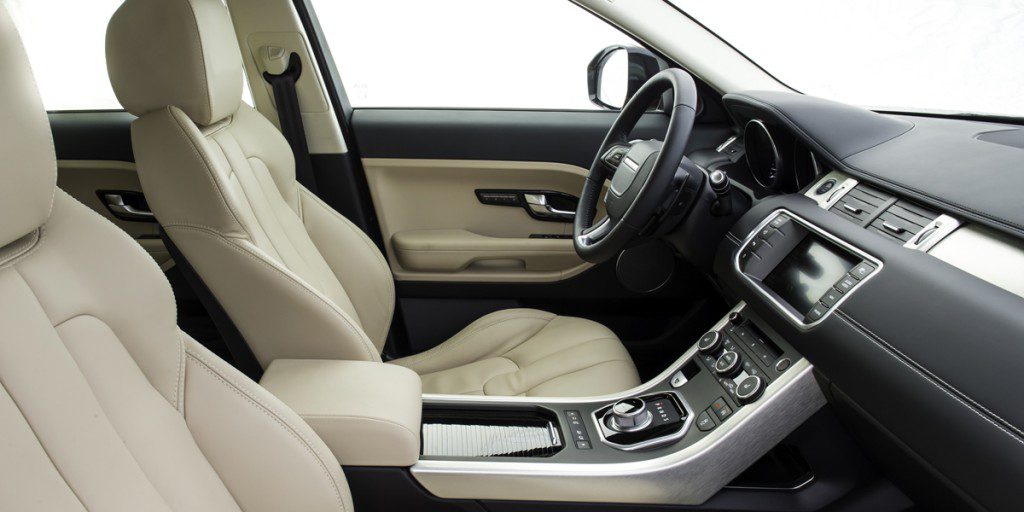| Premium compact SUV; Built in |
|
|
| Good condition price range: $26,300 – $45,300* |

2014 Land Rover Range Rover Evoque

2014 Land Rover Range Rover Evoque

2014 Land Rover Range Rover Evoque

2014 Land Rover Range Rover Evoque
| Pros: |
|
| Cons: |
|
Evoque strays from the typical Land Rover template with its compact footprint, rakish styling, and turbocharged 4-cylinder powerplant. This spunky, sporty new premium-compact SUV is both the smallest and (when new) the priciest vehicle in the class. Still, it should appeal to style-seekers looking for the utility of an SUV, the off-road ability of a traditional Land Rover, and the fuel economy of a much smaller vehicle. Skip the impractical 2-door model, however. It sacrifices much functionality.
Overview
The Land Rover Range Rover Evoque made its debut as the smallest vehicle from this British SUV manufacturer. Evoque was a 5-passenger wagon available with 2 or 4 doors. All-wheel drive was standard and included Land Rover’s Terrain Response System, which automatically tailored AWD performance to specific off-road conditions. The sole engine was a 240-horsepower 2.0-liter turbocharged 4-cylinder engine. Initially, it teamed with a 6-speed automatic transmission. This was replaced by a 9-speed automatic for 2014. Maximum towing capacity was rated at 3500 pounds. Available safety features included ABS, traction control, antiskid system, curtain-side airbags, and front-side airbags. Additional standard safety enhancements included the AWD with Terrain Response and Hill-Descent Control, a Hill-Ascent Control that prevented rolling backwards when starting up steep slopes, and the standard rearview camera and front/rear obstacle detection. Evoque came in three trim levels: base Pure, sporty Dynamic, and top-line Prestige. Available features included dual-zone automatic climate control, navigation system, keyless access/engine start, power tailgate, and DVD entertainment. Also offered was a surround-view camera system that used five cameras to display a 360-degree view outside the vehicle.
Brand-conscious buyers doubtless saw Evoque as an alternative to the Audi Q5, BMW X1 and X3, and, to some extent, the Mercedes-Benz GLK. Others may also shop Volvo XC60 as well as the Acura RDX and Infiniti EX37.
Yearly Updates
| 2012 Range Rover Evoque The Land Rover Range Rover Evoque entered 2013 with predictably few changes: a lower-priced base 4-door, a new parking-assist option, and off-road mapping and guidance as added functions for the available navigation system. In addition, all 2013s wore a subtly restyled grille that bore the Land Rover logo, which had been omitted to stress Evoque’s status as an upper-crust Range Rover. |
| 2013 Range Rover Evoque For 2014, the Range Rover Evoque got a 9-speed automatic transmission in place of a 6-speed automatic, and Land Rover’s “Active Driveline” on-demand 4-wheel-drive system came standard. |
